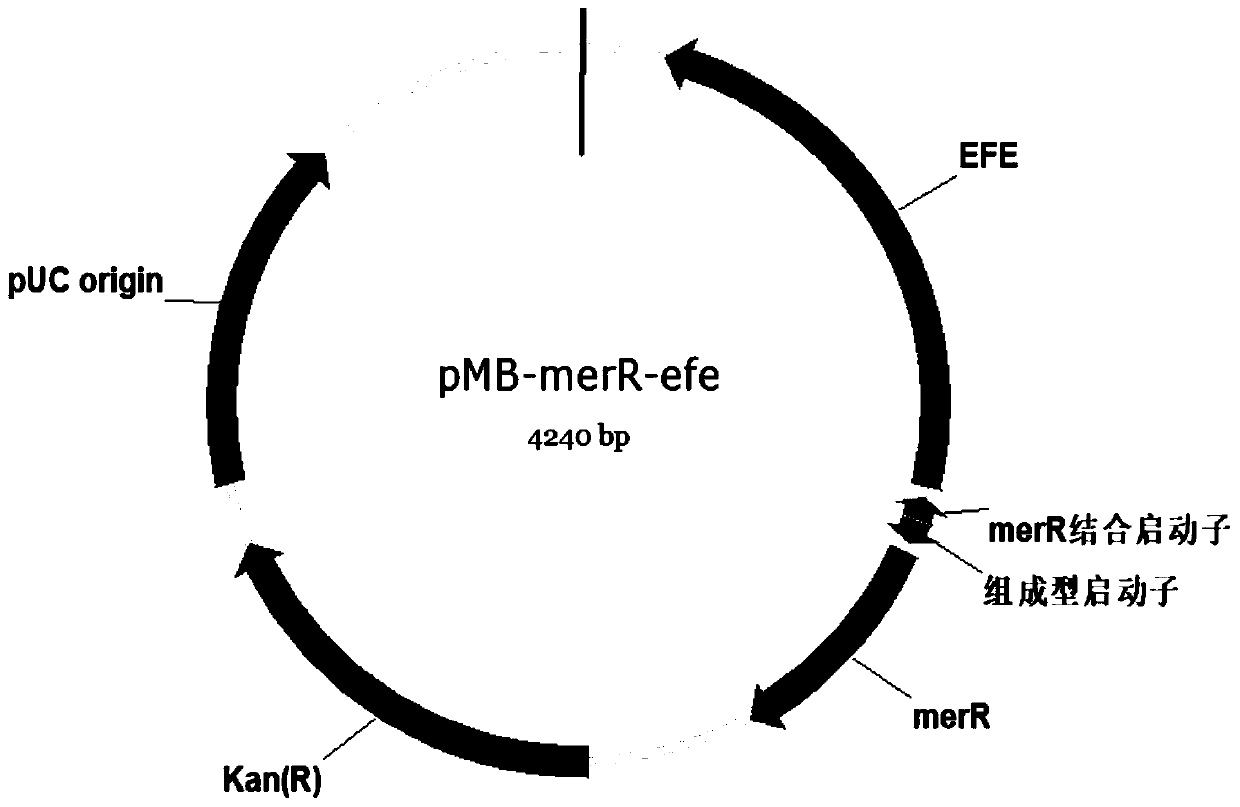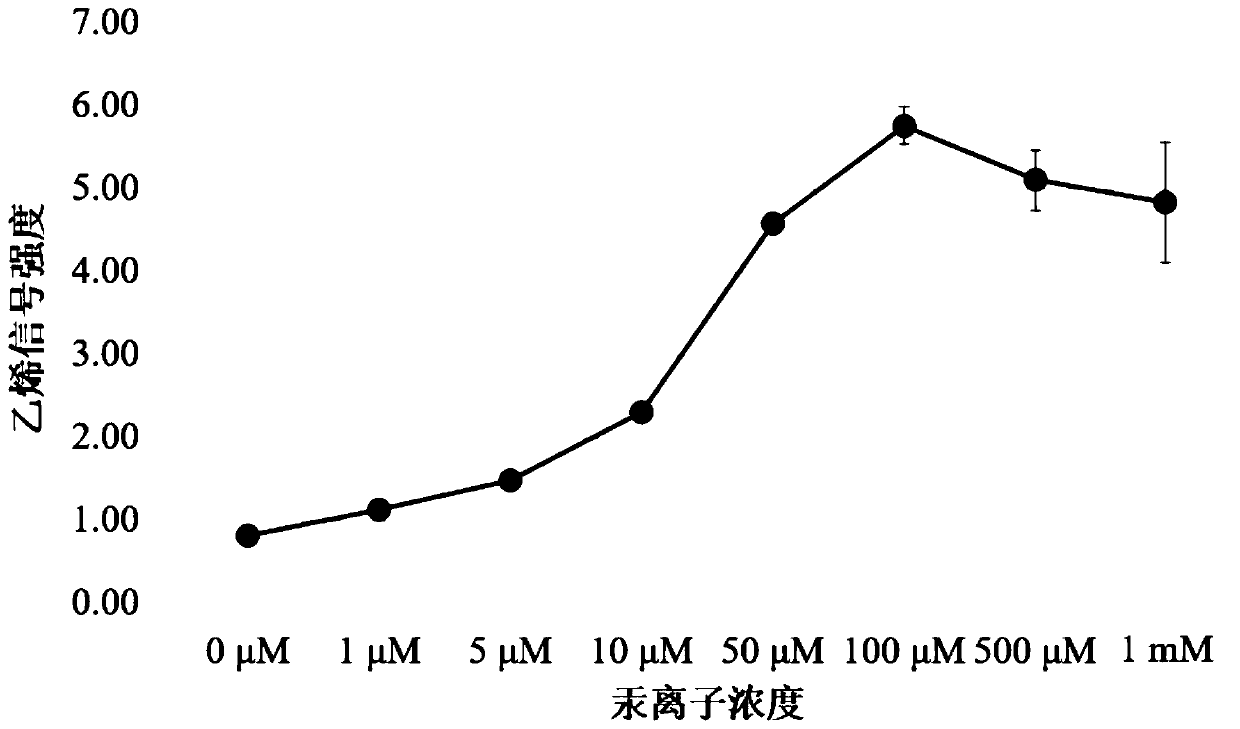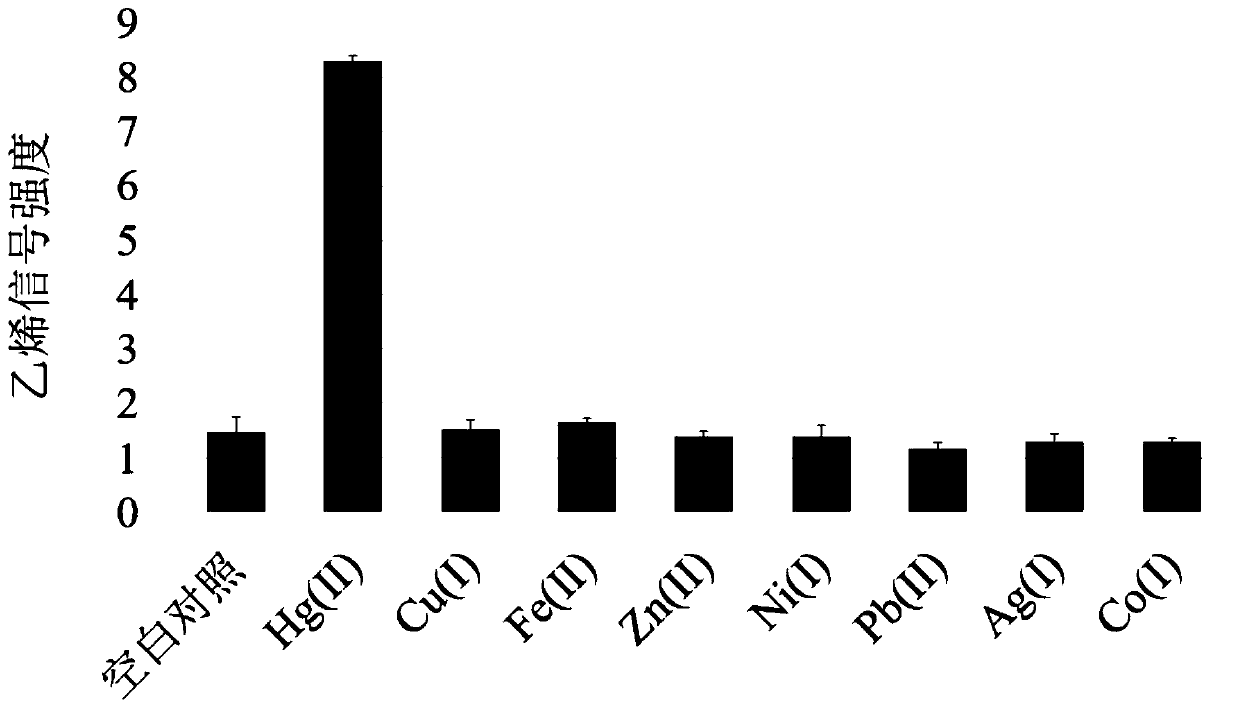Nucleic acid protein complex allosteric microbial whole-cell gas sensor used for heavy metal detection
A whole-cell and microbial technology, applied in the field of molecular biology, can solve the problems of complex pretreatment process, not suitable for the field, large sample size, etc., and achieve the effect of easy portability and field detection, less sample demand, and improved accuracy
- Summary
- Abstract
- Description
- Claims
- Application Information
AI Technical Summary
Problems solved by technology
Method used
Image
Examples
Embodiment 1
[0032] Embodiment 1: the detection of a novel microbial gas sensor for detecting mercury ions to mercury-containing soil standard samples
[0033] Step 1: Inoculate a single colony of sensor cells into a 50mL Erlenmeyer flask filled with LB medium, add kanamycin to a final concentration of 50μg / mL, and culture overnight at 37°C and 200rpm;
[0034] Step 2: Take 1mL of the above bacterial solution into 20mL of fresh LB medium, culture at 37°C, 200rpm until OD600=0.6;
[0035] Step 3: Weigh 1g of the soil sample to be tested, suspend it in 10mL culture medium solution, shake for 10min, and make the solution to be tested;
[0036] Step 4: Take 2.5mL detection sensor bacteria solution and 2.5mL internal reference sensor bacteria solution, add 2.5mL fresh LB culture medium, 100μL substrate mixture solution, 50μL soil test solution to a penicillin bottle, seal with a rubber cap, 37°C, 200rpm induction for 40min;
[0037] Step 5: Use the probe of the portable ethylene measuring ins...
PUM
 Login to View More
Login to View More Abstract
Description
Claims
Application Information
 Login to View More
Login to View More - R&D
- Intellectual Property
- Life Sciences
- Materials
- Tech Scout
- Unparalleled Data Quality
- Higher Quality Content
- 60% Fewer Hallucinations
Browse by: Latest US Patents, China's latest patents, Technical Efficacy Thesaurus, Application Domain, Technology Topic, Popular Technical Reports.
© 2025 PatSnap. All rights reserved.Legal|Privacy policy|Modern Slavery Act Transparency Statement|Sitemap|About US| Contact US: help@patsnap.com



